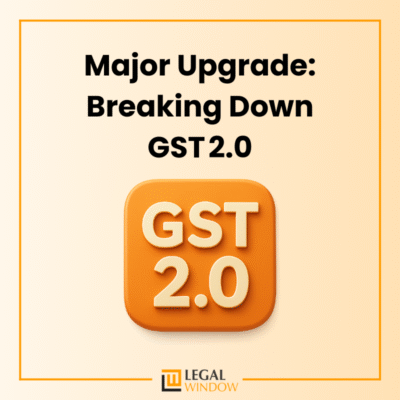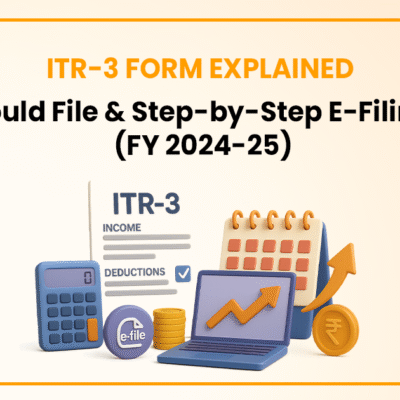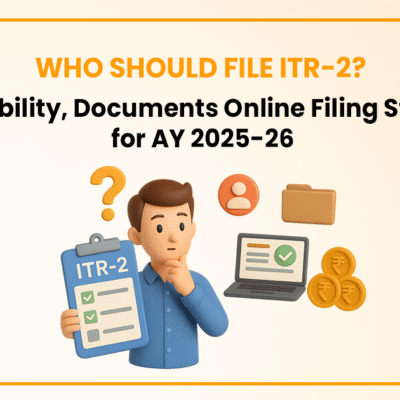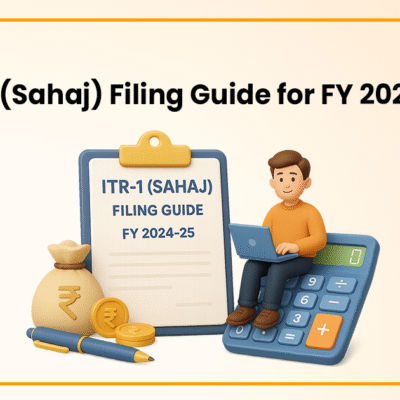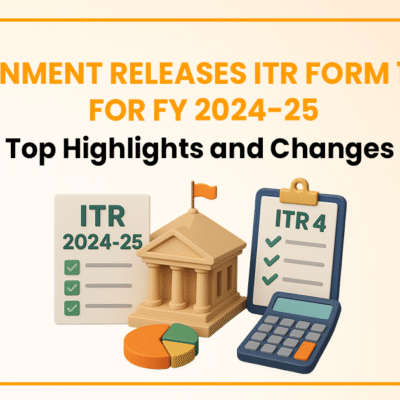
As per section 50C, the calculation of capital gain of the sale of land or building or both is held as a capital asset. Further, this Section is not applicable in the case of land or building or both are held as stock. This present blog pays attention to ‘Section 50C of the Income Tax Act,1961’. It talks about the special provision for the full value of consideration in certain cases.
Capital Gain
Capital gains are income on the sale of any wealth in the hands of the seller. A capital asset includes various assets including real estate. So, any gain on the sale of land or building by the owner is taxable as a capital gain. Sale consideration reduced by the cost of acquisition (cost of acquisition for land or building held for more than 24 months) is taxable as a capital gain.
As per the Income Tax Act, capital gains tax in India must not be paid in case of the individual inherits the property and there is no sale. Though, if the person who has inherited the property decides to sell it, the tax will have to be paid on the income that has been generated from the sale. These are some examples of capital assets jewellery, trademarks, patents, vehicles, machinery, leasehold rights, house property, buildings, and land.
Section 50C of the Income Tax Act, 1961
Section 50C talks about the calculation of capital gain of the sale of land or building or both which is held as a capital asset. According to this section, the cost of sale consideration should not be less than the stamp duty cost which is assessed by the Stamp Valuation Authority. Nevertheless, a Marginal relief of 10% difference is allowed by the income tax department. Further, this Section is not applicable in the case of land or building or both are held as stock.
In case of a sale, consideration received or claimed to be received by the seller on the sale of land or building or both is less than the cost adopted by stamp valuation authority, such cost adopted by SVA would become actual sale consideration received or increasing to the seller. Consequently, capital gain would be Valuation according to stamp valuation specialists reduced by the cost of acquisition.
Conditions for Applicability under Section 50C
Following are the applicable conditions under the section 50C of the Income Tax Act, 1961:
- It is held on capital asset
- There is a transfer of land or building or both
- Whether it is Long Term Capital Asset or Short Term Capital Asset
- The asset can be depreciable or non-depreciable.
Calculation of Capital Gain under Section 50C of the Income Tax Act, 1961
The following table shows the way to calculate the Capital Gain under the section 50 C of the income tax act, of 1961:
| Particular | amount |
| The full value of consideration: Sale value or stamp duty value (Higher)
|
… |
| Less: Expenditure about the transfer
|
… |
| Net Consideration
|
… |
| Less: Cost of Acquisition
|
… |
| Less: Cost of Improvement
|
… |
| Capital Gain/loss
|
… |
But, where the Stamp duty value is a maximum of 110% of consideration, then those sale considerations shall be treated as Full Value of Consideration
What is Stamp Duty?
Stamp duty value means any value adopted by any authority of the Central or State Government for the determination of payment of stamp duty for the immovable property.
Under section 50C, while calculating capital gain ascending on the transfer of land or building or both, if the actual sale consideration of such land and/or building is less than the stamp duty value, then the stamp duty value will be taken as the full value of consideration.
Calculation of Stamp Duty under section 50C of the Income Tax Act, 1961
The stamp duty value is calculated by the Stamp Valuation Authority. Conversely, the stamp duty on the date of the agreement may be different from the stamp duty value on the date of registration.
Following are the 2 possible scenarios in this case:
- Take the stamp duty value on the date of the agreement:
- Fully or partially of consideration has been known before the date of the agreement and;
- Payment should be made through account payee cheque/draft or as per prescribed electronic mode.
- Take stamp duty value on the date of registration
| Particulars | Situation 1 | Situation 2 | Situation 3 |
| Stamp duty value on the date of Agreement
|
… | … | … |
| Stamp duty value on the date of Registration
|
… | … | … |
| Payment of consideration
|
… | … | … |
| Mode of payment
|
… | … | … |
| Stamp Duty value for Section 50C
|
… | … | … |
Calculation of Stamp Duty under section 50C of the Income Tax Act, 1961
There can be different honest reasons among the parties for having a transaction of sale of land or building for a consideration lower than the cost agreed by the Stamp Valuation Authority. Section 50C of the income tax Act provides protection only against variability in the cost of the property caused due to a considerable gap between different stages of the transaction of sale.
Further, there have been many litigations in the past where the value of the asset on the date of agreement to sell and actual sale varies due to economic aspects such as demand and supply.
Conclusion
Therefore, it is clear from the above that Section 50C talks about the calculation of capital gain of the sale of land or building or both which is a capital asset. Further, this section says that the cost of sale consideration shall not be less than the stamp duty cost which is assessed by the Stamp Valuation Authority.
LegalWindow.in is a professional technology driven platform of multidisciplined experts like CA/CS/Lawyers spanning with an aim to provide concrete solution to individuals, start-ups and other business organisation by maximising their growth at an affordable cost. Our team offers expertise solutions in various fields that include Corporate Laws, Direct Taxations, GST Matters, IP Registrations and other Legal Affairs.
Categories
- Agreement Drafting (23)
- Annual Compliance (13)
- Change in Business (37)
- Company Law (150)
- Compliance (90)
- Digital Banking (3)
- Drug License (4)
- FEMA (17)
- Finance Company (42)
- Foreign Taxation (9)
- FSSAI License/Registration (15)
- GST (124)
- Hallmark Registration (1)
- Income Tax (214)
- Latest News (36)
- Miscellaneous (170)
- NBFC Registration (8)
- NGO (18)
- SEBI Registration (6)
- Section 8 Company (10)
- Start and manage a business (27)
- Startup/ Registration (134)
- Trademark Registration/IPR (48)
Recent Posts
- Major Upgrade: Breaking Down GST 2.0 September 15, 2025
- New Income Tax Bill 2025 August 27, 2025
- ITR-3 Form Explained: Who Should File & Step-by-Step E-Filing Guide (FY 2024-25) June 25, 2025
All Website Tags
About us
LegalWindow.in is a professional technology driven platform of multidisciplined experts like CA/CS/Lawyers spanning with an aim to provide concrete solution to individuals, start-ups and other business organisation by maximising their growth at an affordable cost.


